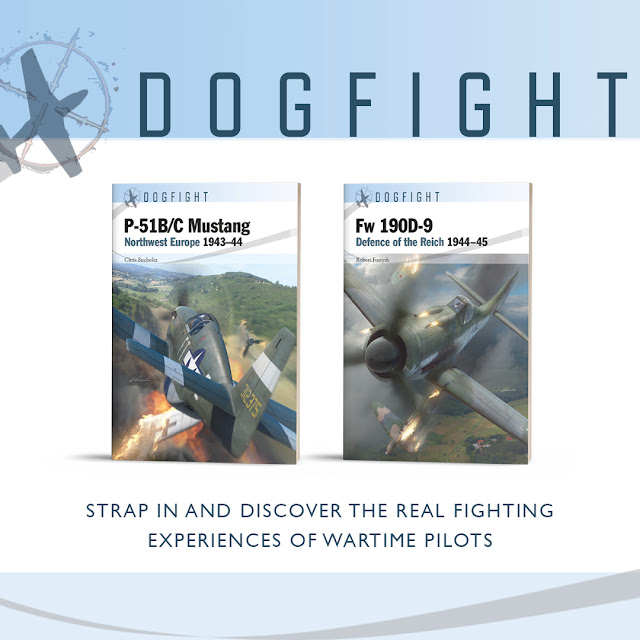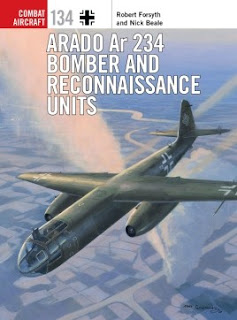" If I’m honest, I’m a bit confused how this series fits in with Aircraft of Aces, Combat Aircraft, Air Campaign, Aviation Elite, Duel/Versus and Air Vanguard. Regardless, I don’t mind re-reading as a refresher so likely I’ll get some of these.." Richard Patrick on FB
Wondering what Osprey's sales pitch is on this, how are they selling it? Aimed at younger readers perhaps ?
Rather like Kagero who launched 'series' after series and then forgot about them, this appears to be more of the same, but each time with new and expensive (although it goes without saying, well-done) artwork... how does the new Dogfight Fw 190 Dora book by Robert Forsyth fit in with the same author's Duel 'Dora vs Tempest' title.
It is perhaps not generally appreciated by all Luftwaffe fighter enthusiasts but the 1,500 D-9s built only claimed around 70 victories all told, so the type did not really do a lot of dog-fighting and/or was shot down in huge numbers! IIRC on the 14 January 1945 Berlin raid a third of all Doras then in service were brought down. By that stage, with the Soviets fast approaching Berlin and the Western Allies just weeks away from crossing the Rhine, ground-attack would fast become the primary role of this stop-gap high altitude fighter!
" I’m open to trying them but 'Aircraft of the Aces' was way ahead of its time and hasn’t really been surpassed, sadly even by subsequent Osprey series..." Patrick Power on FB
" The German Me 262 receives most of the plaudits when it comes to jet warplane development, but Robert Forsyth and Nick Beale tell the story of a different jet aircraft: the Arado Ar234 bomber. It is an interesting tale with an undercurrent of ‘what might have been’ running through it. Forsyth and Beale begin with the concept and development; testing started in 1943, though the first flew in March 1944. They then follow a detailed narrative of finding pilots and testing this unusual machine, which is perhaps surprisingly interesting given this is often skipped over to get to the operational material. The Ar 234 flew its first reconnaissance mission over Normandy in July 1944, but weather, technical issues, and Allied attacks on German airfields disrupted continued missions. Taking photographs was one thing, dropping bombs quite another as far as technical considerations went. But Ar 234s dropped bombs on Liege on Christmas Eve 1944, sparking a flurry of missions, some of which took place at night. They did well, working in conjunction with Me 262s, and proved a problem for the Allies. Nevertheless, the Germans lacked the resources to maintain more than just a few Ar 234s and Allied control of the skies hindered them further with Tempests, Spitfires, and Mustangs shooting down planes the Germans could ill afford to lose. As the war drew to close, the Ar 234s performed multiple and sometimes effective missions, and to the credit of their pilots they fought on until the end against hopeless odds.The story of the Ar 234 is told with authority and the depth of the authors’ research clearly shows. The accounts of the Allied pilots tasked with bringing these warplanes down are particularly well handled. As you should expect with Osprey, the text is laced with useful black and white photographs and the usual high quality colour illustrations. Aviation enthusiasts and modelers will appreciate this book, but it is a good read for anyone interested in the latter days of the Third Reich..."


